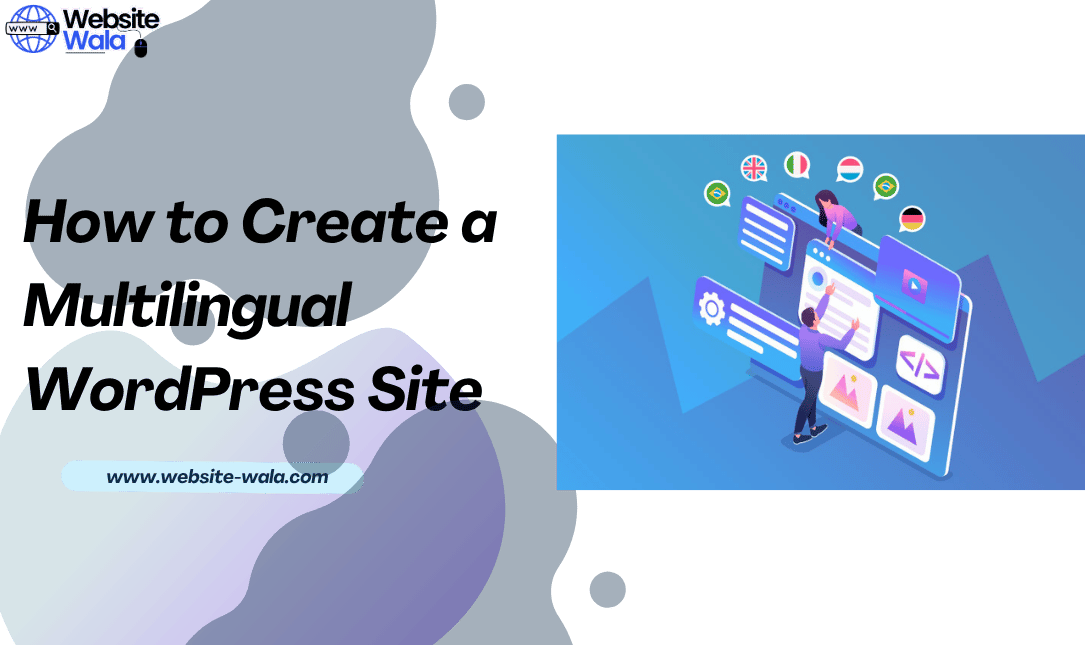
Learn How to Create a Multilingual WordPress Site with our step-by-step guide to reach a global audience and translate WordPress pages effortlessly.
How to Create a Multilingual WordPress Site
Expanding your website to cater to a global audience is essential in today’s digital world. One of the most effective ways to do this is by creating a multilingual WordPress site. A multilingual website allows you to engage users in their native languages, enhancing the user experience and improving overall accessibility. In this guide, we will cover everything you need to know about How to Create a Multilingual WordPress Site, from choosing the right plugins to optimizing your content for multiple languages.
Why You Should Create a Multilingual Website
Creating a multilingual website opens doors to a broader audience, increasing your brand’s reach. By offering content in different languages, you improve engagement, build trust, and enhance the multilingual site user experience. Moreover, search engines favor websites that serve multiple regions, potentially boosting your SEO performance.
If your goal is to global audience reach with WordPress, investing in a multilingual WordPress site is a strategic move. It allows your business to connect with international users and provide them with relevant content in their preferred language.
Choosing the Right WordPress Translation Plugins
One of the first steps in How to Create a Multilingual WordPress Site is selecting the right WordPress translation plugins. These plugins allow you to translate content in WordPress efficiently without creating duplicate sites for each language. Some popular options include:
-
WPML (WordPress Multilingual Plugin): A robust tool for managing multilingual content, translating posts, pages, and even custom post types.
-
Polylang: Allows you to create a multilingual WordPress site with ease, supporting multiple languages for posts, pages, categories, and tags.
-
TranslatePress: Ideal for visual translation, letting you translate pages directly from the front end.
Using multilanguage WordPress plugins simplifies the process and ensures your content is accessible to a wider audience.
Step-by-Step Guide to Translate WordPress Pages
Here’s a detailed approach to translate WordPress pages effectively while maintaining a seamless multilingual site user experience.
1. Install a Translation Plugin
Start by installing a reliable plugin such as WPML, Polylang, or TranslatePress. These tools are essential for How to Create a Multilingual WordPress Site. Navigate to your WordPress dashboard, go to Plugins > Add New, search for your preferred plugin, and install it.
2. Configure Language Settings
After installation, configure your site’s languages. Most WordPress multilingual tools allow you to:
-
Choose a default language.
-
Add additional languages.
-
Decide how users switch between languages (e.g., via a language switcher in the menu).
A well-configured language setup ensures a smooth user experience for visitors navigating your multilingual WordPress site.
3. Translate Your Content
Once the languages are set up, start translating your content. With WordPress translation plugins, you can translate WordPress pages, posts, menus, and even widgets. Ensure that every page reflects accurate translations to maintain credibility and professionalism.
4. Optimize Multilingual SEO
Translating your website is not enough; SEO must also be optimized for each language. Use the following strategies:
-
Translate meta titles and descriptions for each language.
-
Optimize URLs with language-specific slugs.
-
Utilize hreflang tags to indicate the language and region to search engines.
Implementing these practices enhances your multilingual site user experience and boosts your global audience reach with WordPress.
Best Practices for a Multilingual WordPress Site
To ensure your multilingual WordPress site performs well, follow these best practices:
-
Consistency in Translations: Avoid machine-only translations. Manual review ensures accuracy and tone consistency.
-
Responsive Design: Ensure your theme supports multiple languages and adapts seamlessly to different text lengths.
-
User-Friendly Language Switcher: Place a language switcher in a prominent location, such as the header or menu.
-
Content Hierarchy: Keep the same content structure across languages to enhance navigation and usability.
-
Performance Optimization: Use caching plugins and optimize images to maintain fast loading times for all users.
Following these tips improves the multilingual site user experience and ensures users stay longer on your site.
Leveraging WordPress Multilingual Tools for Efficiency
Using WordPress multilingual tools can save time and effort when managing translations. Tools like WPML and Polylang offer:
-
Bulk translation management.
-
Automatic synchronization of content updates.
-
Integration with SEO plugins for multilingual SEO optimization.
These features simplify the process of creating and maintaining a multilingual WordPress site, making it easier to scale your website for international audiences.
Tips to Create Multilingual Website Content
Content is the backbone of any successful multilingual website. Here’s how to create content that resonates across languages:
-
Cultural Relevance: Adapt your content to local cultures and customs. Avoid literal translations that may confuse users.
-
Clear Calls to Action: Make sure CTAs are translated accurately and maintain the same persuasive effect.
-
Multimedia Translation: Don’t forget images, videos, and infographics. Use subtitles and captions when necessary.
-
Regular Updates: Keep all language versions updated to ensure consistency and accuracy.
By following a multilingual website guide, you ensure your site delivers a seamless experience to users worldwide.
Conclusion
Creating a multilingual WordPress site is no longer optional for businesses seeking a global audience reach with WordPress. By following this comprehensive guide on How to Create a Multilingual WordPress Site, you can create multilingual website content, utilize the best WordPress translation plugins, and provide an enhanced multilingual site user experience.
Remember, success lies in combining accurate translations with an intuitive user experience. By leveraging WordPress multilingual tools and multilanguage WordPress plugins, your website can become a powerful platform for engaging audiences in multiple languages, boosting traffic, and increasing conversions globally.
Take action today to translate WordPress pages and expand your digital footprint. Following this multilingual website guide ensures your content is accessible, engaging, and impactful across all target markets.























